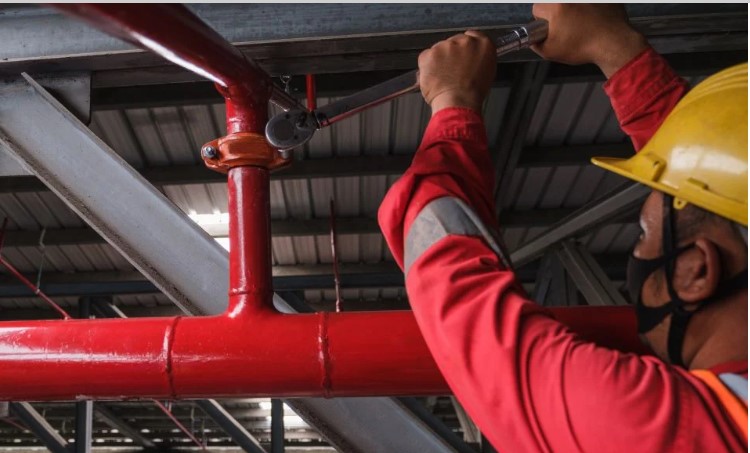Imagine it’s late at night. You’re asleep when a faint smell of smoke wakes you up. Panic sets in. Fire safety isn’t just rules — it’s survival. Whether at home, work, or outdoors, knowing basic fire safety tips can make a huge difference.
This guide shares real-life stories, expert advice, and practical fire protection strategies you can apply right away. By the end, you’ll know how to prevent fire and act quickly if disaster strikes. Let’s make safety second nature.
A Real-Life Fire Safety Story
Sarah, a small business owner, ignored fire safety drills for years. One evening, an electrical fault sparked a fire in her shop. Employees panicked. There was no evacuation plan.
Luckily, the fire was contained. But Sarah learned a hard lesson: prevention is worth far more than recovery.
She began installing smoke detectors, running drills, and teaching her team fire safety tips.
The lesson: fire safety is essential.
Why Fire Safety Matters
Fires destroy more than property — they endanger lives.
Fire safety prevents injuries, loss, and damage.
Many fires can be avoided with simple precautions.
According to the National Fire Protection Association (NFPA), over 1.3 million fires were reported in the U.S. in 2023. These caused major injuries and property loss. Prevention through fire safety tips is the most effective protection.
Learn more about NFPA fire safety guidelines.
Fire Safety Tips You Can Use Today
Here’s a friendly guide with real-world, practical advice.
1. Install and Maintain Smoke Alarms
Smoke alarms save lives. Install one in every bedroom, outside sleeping areas, and on each floor. Test monthly and replace batteries yearly.
Pro Tip: Don’t ignore a chirping smoke alarm. It’s warning you.
2. Plan and Practice Fire Evacuation
Create a fire escape plan for your home or workplace. Practice at least twice a year. Everyone should know two exits.
Example: A family escaped safely during a kitchen fire because they had practiced twice before.
3. Keep Fire Extinguishers Accessible
Place extinguishers in kitchens, garages, and workshops. Learn the PASS method: Pull, Aim, Squeeze, Sweep.
4. Avoid Electrical Hazards
Check cords regularly. Avoid overloading outlets. Unplug devices when not in use.
5. Maintain Fire Protection Equipment
Check fire extinguishers, smoke alarms, sprinklers, and fire blankets regularly.
6. Store Flammable Materials Safely
Store gasoline, paint, and other flammables in ventilated areas, away from heat.
7. Cooking Safety
Never leave cooking unattended. Keep flammable items away from heat. Turn off appliances after use.
8. Teach Fire Safety
Teach children fire safety and how to stop, drop, and roll.
Fire Protection Strategies for Workplaces
Workplaces have their own risks. A strong fire protection plan should include:
| Strategy | Purpose |
|---|---|
| Fire Risk Assessment | Identify hazards and prevention steps. |
| Emergency Response Plan | Ensure safe, quick evacuation. |
| Regular Fire Drills | Improve readiness and safety. |
| Sprinkler Systems | Reduce fire damage quickly. |
| Employee Training | Build awareness and readiness. |
Real-Life Fire Protection Lessons
Fire safety is about habits, not just rules.
Scenario 1: At a hotel, an electrical fire broke out at night. Staff followed evacuation plans. Everyone escaped safely.
Scenario 2: A tenant ignored a faulty heater. A fire destroyed their apartment. They lost everything.
These examples show that fire protection is about equipment, planning, and awareness.
The Psychology of Fire Safety
We often think, “It won’t happen to me.” That mindset is dangerous. Fire safety requires preparation — like wearing a seatbelt. The cost of preparation is far less than the cost of a fire.
Key Takeaways
Fire safety is about prevention and preparation.
Smoke alarms, evacuation plans, and fire extinguishers save lives.
Workplace fire protection plans are essential.
Everyone should be trained in fire safety.
FAQ: Fire Safety Tips
Q1: What are the most important fire safety tips for homes?
Install smoke alarms, plan evacuation routes, keep fire extinguishers handy, and avoid electrical hazards.
Q2: How often should I test smoke alarms?
Test monthly. Replace batteries at least once a year.
Q3: What is the best fire protection strategy for workplaces?
Conduct risk assessments, install safety equipment, train employees, and practice drills regularly.
Q4: Can fire safety training save lives?
Yes. Training improves response time and reduces panic.
Q5: How can I reduce fire risks in my home?
Maintain electrical systems, store flammables safely, and never leave cooking unattended.
Q6: What’s the easiest way to start a fire safety plan?
Install smoke alarms and create an evacuation route first.
Q7: Where can I find credible fire safety resources?
Visit the NFPA (https://www.nfpa.org) for trusted fire protection guidelines.
Want to deepen your knowledge of fire protection? Read our next guide: Advanced Fire Safety Practices for Homes and Workplaces and learn how to safeguard your life and property.


